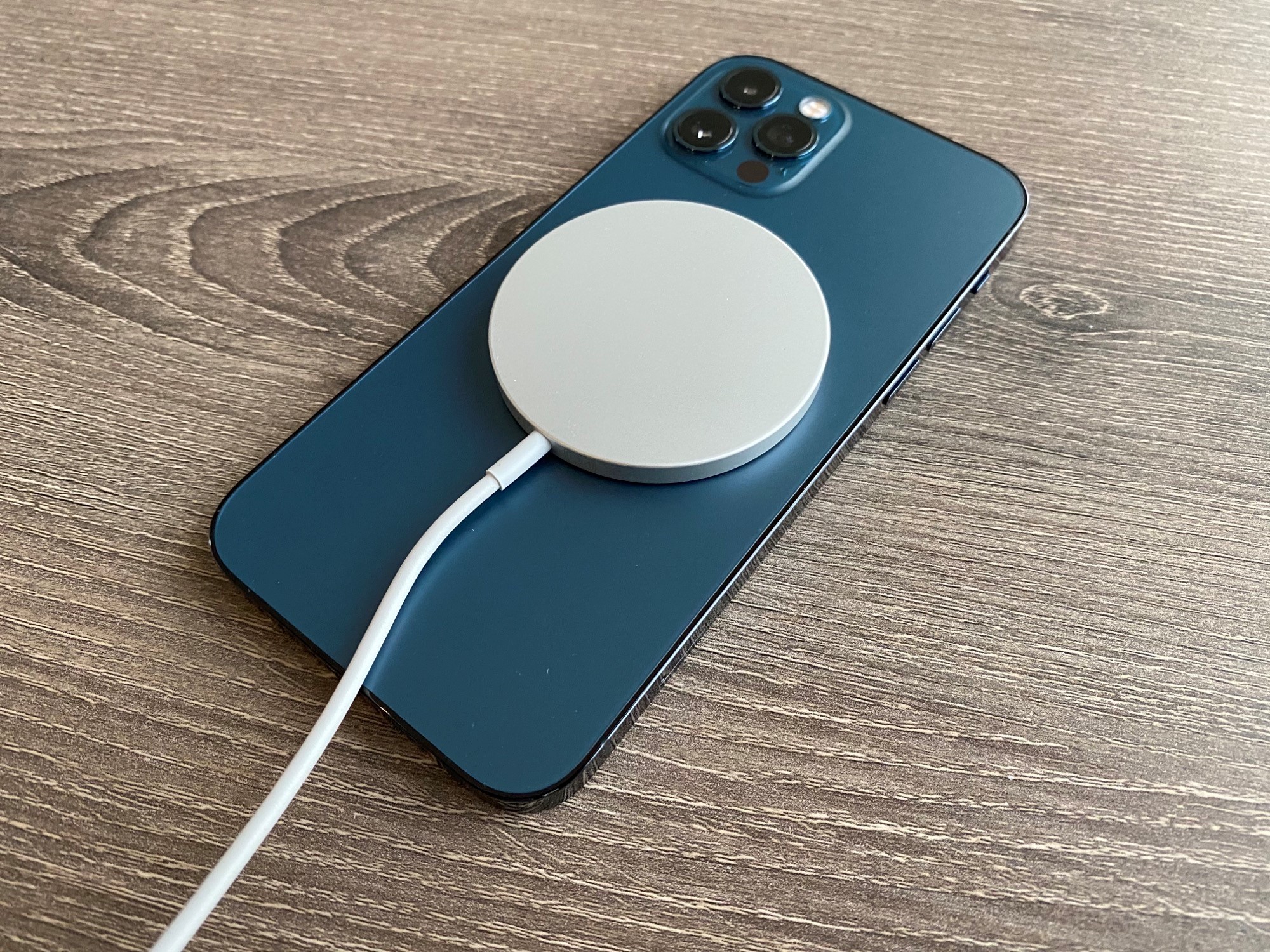iPhone 12, Pro review: Apple proves you don’t need flashy gimmicks in a flagship device
Posted Oct 20, 2020 7:00 am.
Last Updated Oct 20, 2020 7:08 am.
TORONTO – The iPhone is going back to basics–or at least it certainly appears to be the thinking behind Apple’s upcoming iPhone 12.
While many smartphone manufacturers are trying to wow consumers with swivelling dual screens and motion gestures, Apple plays it safe, focusing on the useful features that many of us rely on–and that’s not a bad thing.
DESIGN

File photo of Apple’s iPhone 12. (PHOTO: Mike Yawney, CityNews)
Apple is turning back the clock when it comes to the design of the iPhone 12.
Instead of the smooth, rounded edges we have seen over the last few generations, Apple has gone back to the squared-off edges, and it feels good!
Having used the iPhone 12 and iPhone 12 Pro for the past week without a case, I can tell you it feels great in the hand. The polished aluminum edges (stainless steel on the iPhone 12 Pro) looks slick! Not only does it catch the eye as it reflects light, it gives the phone a high quality feel as your fingers wrap around the sides.
As for the rear, the iPhone 12 has a shiny polished glass back, while the iPhone 12 Pro sports a textured matte glass back.
DISPLAY
I am a huge fan of OLED displays. Both models feature a 6.1 inch OLED display with narrow bezels, meaning the front of the iPhone 12 is almost all screen.
The deep, dark, inky blacks make watching your favourite videos, even scrolling through social media a treat. Apple has bumped up the brightness of its OLED displays, and they now support HDR.
Colours are vibrant and whites pop, especially in contrast with dark backgrounds.
These displays are bright! Be prepared to turn down the brightness of your screen as you lay in bed at night or risk getting a swat from your partner!
The iPhone 12 Pro does have the advantage of supporting Dolby Vision, but for the typical user, it probably won’t be a major selling factor.
CERAMIC SHIELD

File photo of Apple’s iPhone 12. (PHOTO: Mike Yawney, CityNews)
It may be weird to get excited about the actual glass on the front of these new phones, but as someone who is paranoid about scratches on their device, I will say Ceramic Shield may be one of the most important features.
Apple partnered with Corning to develop a specialized crystallization process to create Ceramic Shield. It looks like ordinary glass, but the companies claim it’s not only more scratch-resistant, but has 4 times the drop performance over previous iPhones.
Fortunately, I didn’t drop either device during my review, but I will say not one noticeable mark on the screen so far. I am curious if the claims will stand up.
At some point I always end up putting my phone in my pocket, forgetting there was a coin in there. You can guess the result.
I am eager to see how the screen holds up over time and if Ceramic Shield lives up to the claims.
PERFORMANCE
Regardless of how a phone looks and feels in the hand, when it comes right down to it, performance is everything.
Apple says its new A14 Bionic chip is the fastest chip in any smartphone, and it certainly doesn’t disappoint. Both devices were exceptionally fast and able to handle task with lightning speed.
I even found the new iPhones to run slightly cooler than last year’s models, especially while using apps that use augmented reality.
CAMERAS

File photo of Apple’s iPhone 12. (PHOTO: Mike Yawney, CityNews)
Cameras have become one of the most important features on smartphones, and once again Apple has bumped up the specs. While the iPhone 12 has a dual-camera system, with 12MP wide and 12MP ultra-wide cameras, the Pro model adds in the 12MP telephoto camera.
It’s a similar configuration to last year’s models, however, the new camera systems have more power.
Apple has upgraded the aperture to allow more light in, which makes a big difference when trying to snap a photo in low light settings.
Even colours appear more natural in low light. This Night Mode is enhanced by what Apple refers to as Computational photography. The camera systems rely on the A14 Bionic chip to use machine learning to add details which would normally be left out in extreme light settings.
This also helps when taking photos in bright light, where dark shadows can limit details. Night mode is available on all the cameras, including the front so now selfies can be taken in low light conditions.
This is a welcome feature, and one that was greatly missed in last year’s models.
PHOTOS: Gallery of pictures taken with an iPhone 12 Pro
If cameras are of the utmost importance, you may want to lean towards the iPhone 12 Pro model as it has a built-in LiDAR scanner.
This sensor measures how long it takes for light to bounce off an object (even in the dark).
With this information, the iPhone 12 Pro can more accurately focus on objects, even in the lowest of light. I found I no longer ended up with out of focus photos when I tried to snap a picture in near darkness.
I could even choose if I wanted my subject in focus or the background, which was always a bit of a crapshoot. And yes, you can now take photos in Portrait mode in low light.
One other quick note to mention about LiDAR. The sensor is also used to improve augmented reality experiences on your iPhone. Since the iPhone 12 Pro can use the sensor to better detect depth and objects in a room, AR experiences become more stable. If augmented reality is important, once again the Pro model may be recommended.
5G
And now for what many people may consider to be the biggest new feature on Apple’s latest iPhones–5G.
These are the first iPhones to take advantage of the latest wireless networks across the country. Apple says all the iPhone 12 will support all 5G networks in Canada, which in theory can provide speeds of up to 100 times faster than current LTE networks.
Here’s something to keep in mind when it comes to 5G. To take advantage of 5G you need to make sure the network is available in your community. While Rogers (our parent company) now have networks in 130 cities across Canada, many Canadians still do not have access to 5G. It depends on where you live and your carrier.
I found the Rogers 5G network was in some cases up to six times faster than the Rogers LTE network when I ran speed tests. That being said, you really need to keep in mind there are may factors when it comes to speed, including your distance from the cell tower.
It may still be in its infancy (even carriers admit 5G speeds will get faster over time), but by adding support Apple is future-proofing the iPhone 12, so it is ready to take advantage of the speeds when carriers optimize them.
Is 5G a game-changer? It certainly will be. It may just take a bit of time before it gets there,
MAGSAFE

File photo of Apple’s iPhone 12. (PHOTO: Mike Yawney, CityNews)
Consider this the sleeper feature on the latest iPhones.
If you’ve ever sat your iPhone on a wireless charger overnight, only to wake up and see your device didn’t charge, well you’re not alone.
Wireless charging requires you set the phone down so the charging coil in the back of the phone aligns perfectly with the coil on the charging pad. If it’s off even by a little it can result in slow charging or no charge at all.
To correct this issue, Apple is re-introducing a feature we have only seen on MacBooks, known as MagSafe.
By placing an array of magnets around the charging coil on the back of the iPhone, the phone establishes a secure connection to a MagSafe charger. In fact, it kinda snaps into place, letting you know you are guaranteed a charge.
MagSafe charging will enable faster wireless charging, just keep in mind you must purchase a MagSafe charger to take advantage of this feature.
Personally, I love this. I have been burned on a few occasions where my phone didn’t charge as I place it incorrectly on a charging pad. MagSafe works even through Apple’s iPhone 12 cases, and allows you to use certain MagSafe accessories like a wallet, which magnetically snaps to the back of your iPhone. Clever.
BATTERY LIFE
While we’re on the topic of charging, I should address battery life.
Yes, the iPhone 12 will get you through the day on a single charge. If you are a power user (which I often refer to myself as) you may need a quick top-up if you’ve been using your device constantly, but it doesn’t take long to add 30 to 40 per cent to your iPhone by plugging it in.
Apple has also introduced a new setting called Smart Data Mode, which will restrict 5G usage if it’s not required to help extend battery life.
WHAT’S MISSING?
While many smartphone makers are steering towards USB-C for charging and data transfer, Apple is still sticking with its Lightning connector.
Some may criticize Apple for sticking to its proprietary cable but Lightning is tried and true and allows for ultra-thin devices even if it’s not as widely accepted as USB-C.
One other feature that Apple did not include is a 120Hz screen.
Samsung was one of the first mainstream smartphone manufacturers to graduate to a 120Mz display, which brings a faster refresh rate. Faster refresh rates often mean smoother animations and smoother scrolling.
While it would have been a nice addition, the reality is most users won’t even know what they are missing. Maybe it will be included in next year’s model?
THE BOTTOM LINE
Apple ticks pretty much every box when it comes to its latest iPhones.
Durable build, stronger screen, fast performance, and easy wireless charging. Apple clearly focuses on the features that matter most with users, proving you don’t need gimmicks on a flagship device.
Both the iPhone 12 and iPhone 12 Pro build on tried and true features, while at the same time future-proofing with the addition of 5G.
If you require speed and one of the best cameras available on a smartphone, the latest iPhones are worth looking at. Sure, they feel familiar, but in a strange year that has been filled with uncertainty, is that a bad thing?








